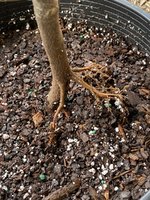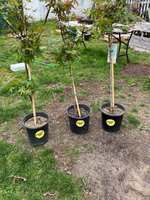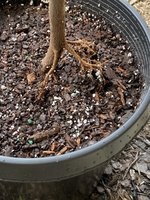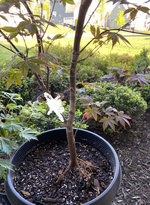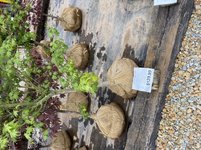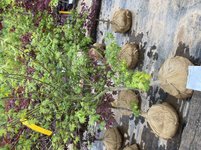"Potential" is a funny term in bonsai. My take is that the trees with the most "potential" are the ones that need the most amount of work - a seedling has a ton of potential because you can do anything with it given the time. A finished tree has a great deal less potential (unless you want to basically start over) as you are likely maintaining it the way it already is. The advice here was to maybe stay clear of certain cultivars as their potential is lowered by leaves not reducing and internodes being too large. I'm not trying to play semantical games, but would suggest a term other than potential. The tree in the pic has tons of potential, as I don't see any characteristic of it that would limit its developmental potential to a shohin, or larger size, or a cascade or whatever. You can basically pick what size and style you ultimately want from it. The question you're likely asking, and not something really anyone else can advise you on, is whether YOU want to work with this material. People can only tell you whether THEY would work with this material. The answer may be a resounding "no", and that may have zero impact on your decision. For example, the fact that Walter Pall wouldn't work with this material (as he has 800 finished trees to deal with that he has been developing for 40 years) should have little impact on someone like me who has 1 year of experience in this and no finished trees. I have little interest working with seedlings; others take a very different approach. It's personal.
One way I try to focus myself in the search for trees is to ask "what would be my plan for this tree?" and then decide whether I want to undertake that. The original plan may change, but it helps me evaluate material better and get passed the point of frantically procuring trees and then starring at them puzzled on what do next. There are basically 3 things I am looking at with acceptable tree species - (i) nebari; (ii) trunk thickness; and (iii) lower movement. These are issues that will need to be dealt with first in development, so where is this tree in relation to the (i) nebari; (ii) trunk thickness; and (iii) lower movement you ultimately want from the tree? I'd open that sack and poke at the nebari for that $130 price tag. I assume it's probably nothing special, but I may pass if there is actually something wrong with it - girdling roots, nebari grows downwards etc. I accept that nursery stock isn't going to provide the nebari I want. That's a personal decision to rectify this in future development. Again, others would vehemently disagree, If the trunk is stick straight and you want lots of movement, you will need to cut this down significantly to start creating that. If you're aiming for a monster 6" trunk and this is 1", well you got a long way to go and will need to grow this out for many years before cutting it down for movement. If it's just for practice and cuttings, perhaps this is only a monetary decision.
You also need to consider your alternatives, if any, at that price level for that amount of development. If this is something you want to work with, can't find better at that price point, and are not willing to spend more, then I don't see the question - just go for it.

